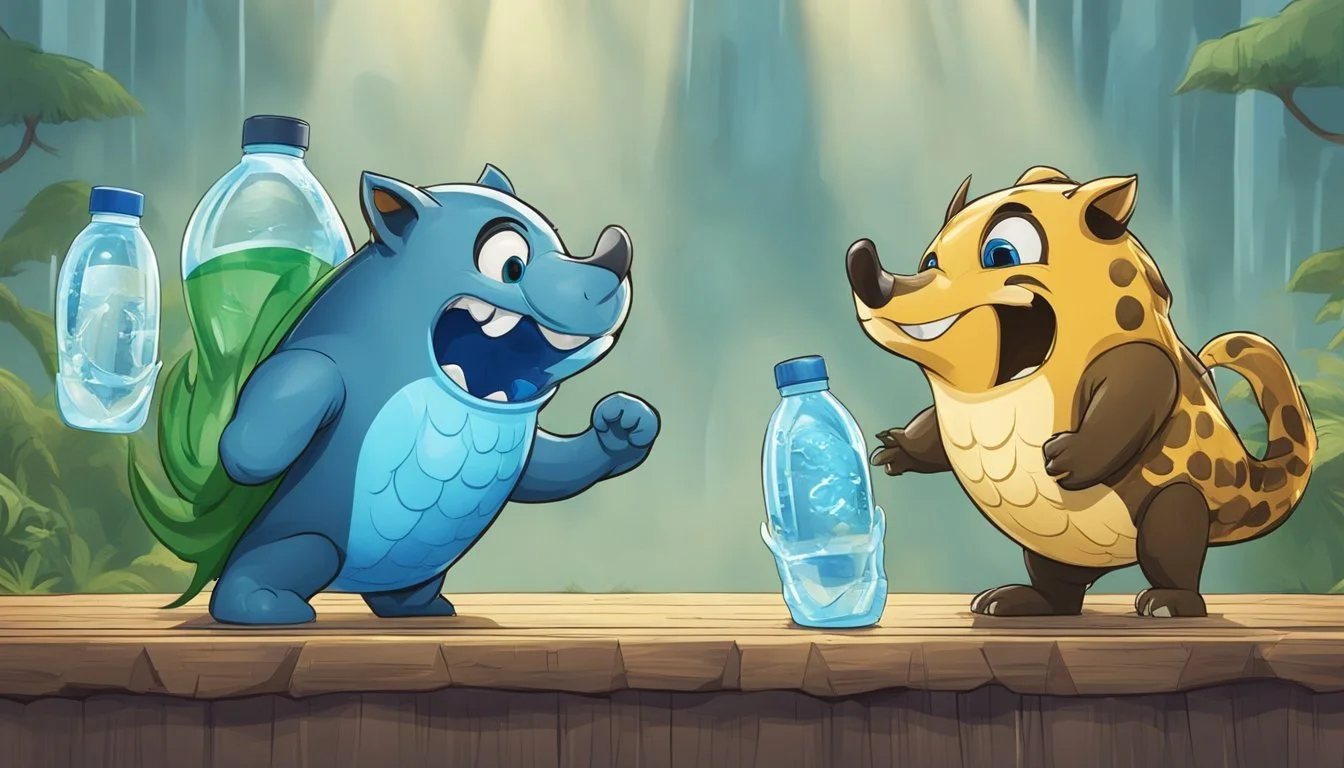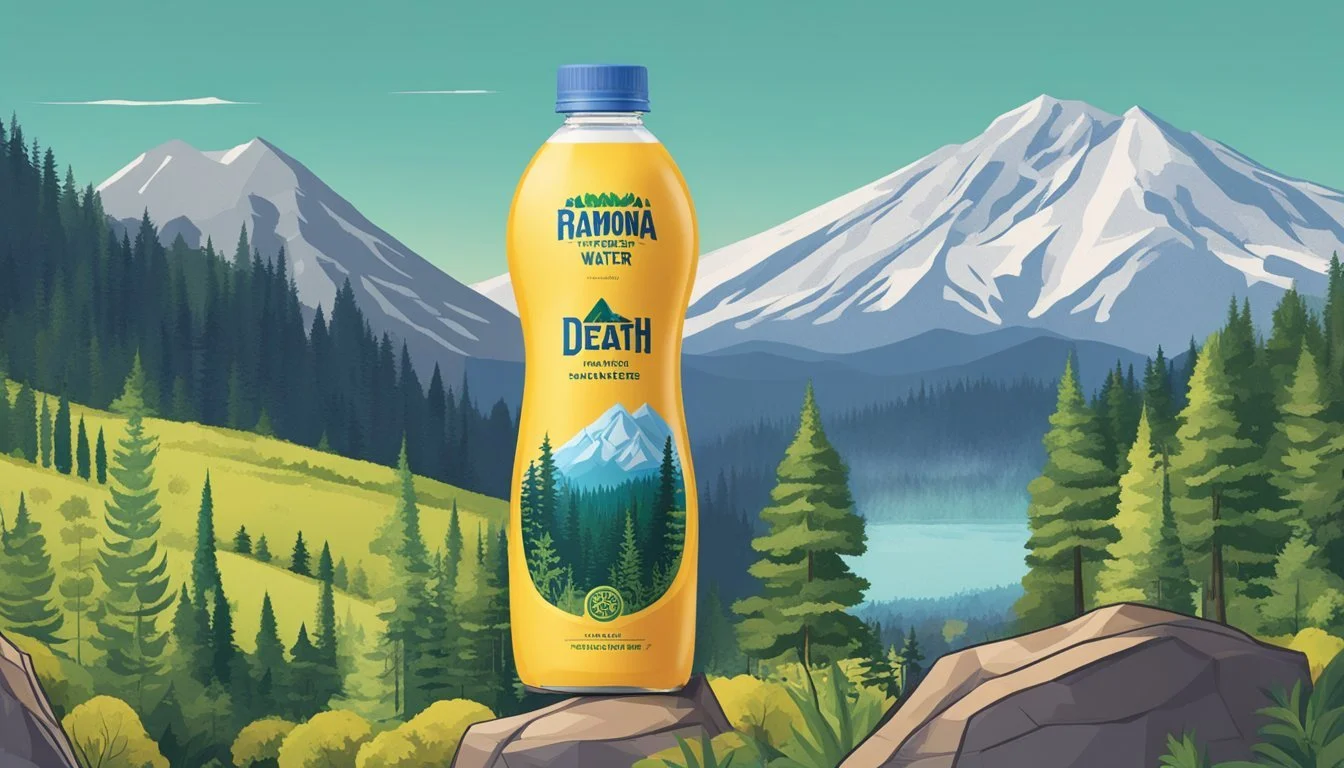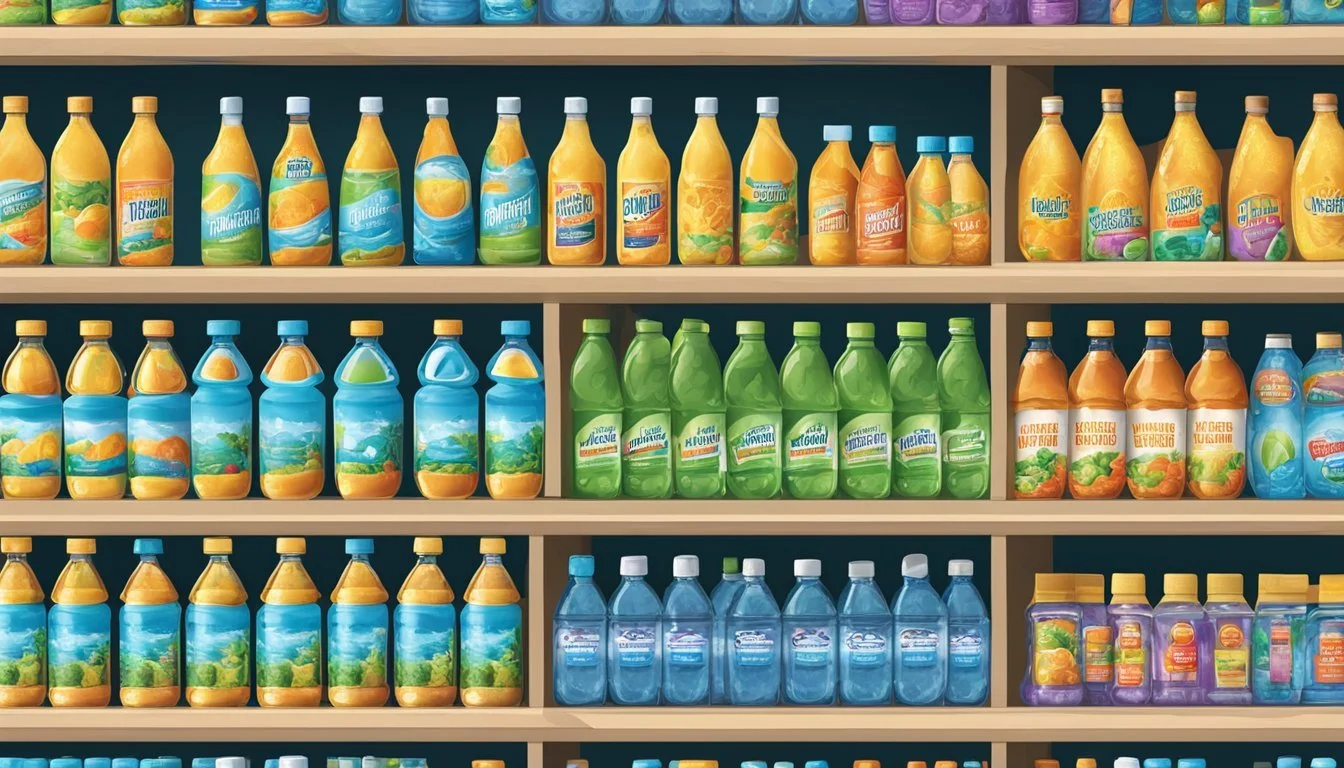Liquid Death vs. Ramona
Analyzing the Better Bottled Water Option
When it comes to choosing between Liquid Death and Ramona, discerning consumers often wonder which bottled water brand stands supreme. Liquid Death, known for its edgy branding and crisp taste, offers both sparkling and flat options packaged in environmentally friendly aluminum cans. This sets them apart from many other brands that still rely on plastic.
On the other hand, Ramona water distinguishes itself with its artisanal touch and unique flavor profiles. While the choice between Liquid Death and Ramona ultimately hinges on personal preference, for those prioritizing sustainability and a no-frills refreshment, Liquid Death may have the edge.
Ultimately, the better choice between Liquid Death and Ramona depends on whether one values sustainability and straightforward hydration or is looking for a more artisanal, flavor-driven experience. By examining the taste, packaging, and brand ethos, readers can make an informed decision on which bottled water fits their lifestyle best.
Understanding the Contenders
Liquid Death and Ramona offer unique approaches to bottled water. Both brands cater to distinct preferences, making it crucial to evaluate their qualities.
Liquid Death: Uniquely Packaged Hydration
Liquid Death stands out with its edgy branding and tagline, "murder your thirst." Available in both sparkling and flat varieties, it is packaged in aluminum cans which are more environmentally friendly than plastic. This consciously rebellious brand aims to reshape the perception of water through its punk-inspired aesthetics.
The company offers its water in single cans or packs, readily available at stores like Whole Foods and 7-11, as well as online. The product contains no additives, emphasizing purity and sustainability.
Ramona: A Gourmet Twist on Bottled Water
Ramona brings a sophisticated edge to the bottled water market. Typically featured in gourmet settings, it offers both sparkling water and unique iced tea blends, catering to a refined palate. The brand is known for quality ingredients and artisanal production methods.
Ramona's packaging is sleek and elegant, appealing to consumers seeking a premium hydration experience. Often seen in upscale grocery stores and specialty shops, it aims to provide a touch of luxury in daily hydration.
Packaging and Environmental Implications
Exploring the packaging and environmental impacts of Liquid Death and Ramona reveals significant differences in their sustainability efforts. The material each brand uses and its recyclability play crucial roles in determining their ecological footprint.
Aluminum vs. Plastic: A Sustainability Battle
Liquid Death opts for aluminum cans over plastic bottles. Aluminum is infinitely recyclable and requires less energy to produce. This makes it more environmentally friendly.
Ramona, on the other hand, uses traditional plastic bottles, which have a higher environmental footprint. Producing plastic involves significant oil and energy resources. The recycling rate for plastic bottles remains low, leading to increased pollution and waste in landfills.
Switching to aluminum could substantially reduce the ecological impact associated with bottled water.
The Environmental Impact of Water in a Can
Liquid Death's use of aluminum cans reduces the burden on landfills. Aluminum is more sustainable due to its lower energy requirements and straightforward recycling process compared to plastic.
The brand positions itself with a punk aesthetic, which appeals to eco-conscious consumers. By choosing aluminum, Liquid Death minimizes its environmental impact, providing a more sustainable alternative to traditional bottled water.
Plastic bottles used by Ramona result in more waste. The environmental footprint of plastic is higher due to its difficult decomposition and low recycling rates. Consumers seeking eco-friendlier options might prefer aluminum-packaged water.
Recyclability and the 'Death to Plastic' Movement
The 'Death to Plastic' movement strongly advocates against plastic use. Liquid Death’s commitment to recyclable aluminum packaging aligns with this movement. Aluminum recycling is a closed loop, meaning the material can be reused indefinitely without quality loss.
Plastic recycling is less efficient, often leading to downcycling, where the material is converted into lower-quality products. The environmental benefits of Liquid Death’s approach are clear. Consumers are encouraged to support brands that prioritize sustainability and innovative recycling practices.
In conclusion, the packaging choices of Liquid Death and Ramona highlight crucial differences in their environmental implications. The preference for aluminum over plastic can lead to significant positive changes in reducing the global ecological footprint.
Product Offerings and Varieties
Both Liquid Death and Ramona offer a range of beverages designed to cater to different tastes and preferences. This includes various flavors, types of water, and unique editions.
Exploring Flavor Profiles
Liquid Death's line includes several flavored sparkling waters such as Berry It Alive, Mango Chainsaw, and Severed Lime. The brand is also known for its iced tea options like Armless Palmer, which combine tea with lemonade.
Ramona specializes in wine spritzers, featuring flavors like Dry Grapefruit, Blood Orange, and Meyer Lemon. These beverages are lightly sparkling and offer a blend of wine and natural fruit flavors, making them a distinct alternative to traditional sparkling waters.
From Sparkling to Still: The Texture of Hydration
Liquid Death offers both sparkling and still water options. Their sparkling water is known for its aggressive carbonation, providing a more pronounced fizzy sensation. The still water is marketed as mountain water, intended for those who prefer a clean, uncarbonated drinking experience.
Ramona focuses exclusively on sparkling beverages. Their wine spritzers combine the effervescence of sparkling water with the richness of wine. This makes their texture unique and appealing to those who enjoy wine but prefer a lighter, more refreshing twist.
Special Editions and Collaborations
Liquid Death occasionally releases special editions and collaborations that add a unique twist to their standard offerings. These can include limited-time flavors or partnerships with artists and brands to create exclusive can designs and flavors.
Ramona also engages in special editions and collaborations. Their wine spritzers sometimes feature seasonal flavors or partnerships with other brands, offering limited edition cans that keep their product line dynamic and interesting. These collaborations often emphasize quality and creativity, enhancing the overall appeal of their beverages.
Market Presence and Consumer Appeal
Liquid Death and Ramona have both leveraged specific strategies to capture market share. Liquid Death's unique branding coupled with strategic social media presence has helped it gain traction, while Ramona relies on its niche appeal in the nonalcoholic drinks sector.
Popularity Through Social Media and Endorsements
Liquid Death has capitalized on platforms like TikTok and Instagram to build a strong online presence. Its viral marketing campaigns often involve edgy humor and shocking content, resonating with its target demographic.
Endorsements from high-profile influencers like Travis Barker have further boosted its visibility. In contrast, Ramona targets a more refined audience, leveraging endorsements from lifestyle influencers to appeal to health-conscious consumers.
Sales, Outlets, and Market Share Insights
Liquid Death is sold in 113,000 retail outlets, positioning it as a widely accessible product. It is the fastest growing water and iced tea brand, boasting significant sales on Amazon.
Ramona, while not as widely distributed, has a strong presence in specialty stores and online marketplaces. Its niche positioning allows it to maintain a loyal customer base within the nonalcoholic drinks market.
Comparative Analysis of Brand Perceptions
Liquid Death is perceived as an innovative and rebellious brand. Its marketing strategy, led by CEO Mike Cessario, appeals to younger, trend-conscious consumers.
Ramona, on the other hand, is seen as sophisticated and health-oriented. While both brands occupy distinct spaces, their targeted approaches have allowed them to build strong identities and consumer loyalty within their respective markets.
Taste and Refreshment Factor
When comparing Liquid Death and Ramona, it's crucial to evaluate their taste and refreshment properties. They each have unique innovations in flavor profiles and offer multifunctional benefits that go beyond mere hydration.
Flavor Innovations and Consumer Palates
Liquid Death is known for its clean, crisp taste with a slight hint of minerals, making it refreshing and palatable. The company also offers a variety of flavors, including sparkling options that maintain the brand's commitment to purity.
Ramona, primarily known for its alcoholic beverages, has ventured into non-alcoholic options that couple well with their original fresh and fruity profiles. These options are precisely crafted to please the discerning consumer palate, ensuring a taste that feels premium and satisfying.
Both brands target different consumer expectations. Liquid Death nails the minimalist approach with straightforward but high-quality flavors. Ramona, on the other hand, appeals to those looking for a more sophisticated and nuanced drinking experience, even in non-alcoholic formats.
Hydration and Beyond: Multifunctional Beverages
Liquid Death emphasizes hydration with its mineral-rich mountain water. Packaged in eco-friendly aluminum cans, it aims to offer a refreshing boost while also addressing environmental concerns. The electrolytes present provide an edge in keeping the body hydrated, catering to those who are active or mindful of their health.
Ramona includes specific non-alcoholic beverages that maintain their characteristic refreshing and hydrating qualities, often blending natural fruit extracts for added appeal. These drinks serve not only as a hydration source but as a multifunctional beverage ideal for various social settings. They are crafted to offer more than just hydration, aiming to provide a comprehensive beverage experience that can rival traditional options.
Both Liquid Death and Ramona bring their unique strengths to the hydration market, making the decision between them reliant on consumer preference for either straightforward hydration or a more nuanced drinking experience.
Health and Wellness Considerations
When comparing Liquid Death and Ramona bottled water, it is essential to look at both the ingredients and their appeal to health-conscious consumers. Focus lies on nutritional value, specific ingredients, and the demand for healthy beverage options.
Ingredients and Nutritional Components
Liquid Death offers two primary unflavored products: Mountain Water and Sparkling Water. These are free from additives, providing pure hydration. Their flavored variants, such as Convicted Melon and Armless Palmer, may contain added sweeteners or flavoring agents. Notably, none of Liquid Death's offerings contain caffeine or energy drink components.
Liquid Death waters boast a slightly alkaline pH, which some believe has health benefits. Their aluminum cans are eco-friendly and fully recyclable, promoting environmental wellness.
Ramona, on the other hand, is more focused on flavor and typically infuses their water with natural ingredients and vitamins. Varieties include options enhanced with electrolytes and natural flavors. They prioritize using minimal processing and clear labeling to attract the health-conscious market.
Addressing the Demand for Healthy Options
Liquid Death positions itself as a healthier alternative to sugary drinks. Its emphasis is on pure, clean hydration with a marketing approach that appeals to eco-friendly and health-aware consumers. The use of aluminum cans aligns with sustainability efforts, reducing plastic waste.
Ramona leverages its unique selling point on nutrient-enriched water, including vitamins and natural flavors. This makes it appealing to those looking for both hydration and added health benefits. The inclusion of electrolytes in some of their products also meets the needs of physically active individuals looking to replenish essential minerals.
Both brands aim to capture a segment of the market looking to make healthier beverage choices, with Liquid Death focusing on simplicity and Ramona offering enhanced nutritional value.
Retail and Distribution
Liquid Death and Ramona both prioritize getting their products into the hands of consumers by leveraging key retail and distribution channels. Their strategic partnerships and innovative approaches to availability make them prominent players in the bottled water market.
Streamlining Availability Across Retailers
Liquid Death has successfully penetrated a variety of retail outlets. Major chains such as Whole Foods and Target are primary distributors. This accessibility allows consumers to purchase Liquid Death both in-store and online, including through various e-commerce platforms.
On the other hand, Ramona focuses more on specialty and high-end retailers. They target a niche market that seeks premium products. This strategy positions Ramona as a luxury brand, but it limits its widespread availability compared to Liquid Death.
Collaboration with Major Retail and Entertainment Networks
Liquid Death has formed notable partnerships with entertainment companies, including Live Nation. This collaboration allows them to market directly to concert-goers and event participants, expanding brand awareness through high-visibility sponsorships and event-based promotions.
Ramona, while not as prevalent in entertainment networks, partners with artisan food retailers and boutique shops. This approach aligns with their brand image, emphasizing quality and exclusivity over mass distribution.
Both companies demonstrate that strategic partnerships are essential for maintaining and growing their presence in the competitive bottled water market.
Pricing and Cost-Effectiveness
Liquid Death and Ramona differ significantly when it comes to pricing and perceived value. This section compares their cost-effectiveness by analyzing both quality and price.
Assessing Value: Quality vs. Price Point
When considering cost-effectiveness, both Liquid Death and Ramona offer unique propositions. Liquid Death is typically priced around $1.62 to $1.69 per can at various retailers including Target and Whole Foods. On the other hand, Ramona's pricing details were not included in the search results, emphasizing the need for additional research.
Liquid Death is sourced from the Austrian Alps, packaged in aluminum cans containing 70% recycled material, and includes both sparkling and flat options. This pricing reflects the quality and sustainability of its packaging.
Ramona must justify its pricing by competing on aspects such as taste, source, and packaging quality.
For consumers, the decision hinges on whether the perceived quality and sourcing of Liquid Death justifies its cost compared to how Ramona positions itself in terms of price and value. Additional factors like availability and market presence contribute to the considerations of cost-effectiveness.
More About Liquid Death
Aqua Carpatica vs Liquid Death: Which Bottled Water is Better?
Core Hydration vs Liquid Death: Which Bottled Water is Better?
Hawaii Volcanic vs Liquid Death: Which Bottled Water is Better?
Hawaiian Springs vs Liquid Death: Which Bottled Water is Better?
Ice Mountain vs Liquid Death: Which Bottled Water is Better?
Icelandic Glacial vs Liquid Death: Which Bottled Water is Better?
Liquid Death vs Cascade Mountain: Which Bottled Water is Better?
Liquid Death vs Crystal Geyser: Which Bottled Water is Better?
Liquid Death vs Crystal Lake: Which Bottled Water is Better?
Liquid Death vs Essence pH10: Which Bottled Water is Better?
Liquid Death vs Kirkland Signature: Which Bottled Water is Better?
Liquid Death vs Proud Source: Which Bottled Water is Better?
Liquid Death vs Richard's Rainwater: Which Bottled Water is Better?
Liquid Death vs Simple Truth: Which Bottled Water is Better?
Liquid Death vs Talking Rain AQA: Which Bottled Water is Better?
Liquid Death vs Whole Foods 365: Which Bottled Water is Better?
Liquid Death vs Whole Foods Italian Still Mineral water: Which Bottled Water is Better?
Mountain Valley Spring Water vs Liquid Death: Which Bottled Water is Better?
Nestle Pure Life vs Liquid Death: Which Bottled Water is Better?
Poland Spring vs Liquid Death: Which Bottled Water is Better?
Purely Sedona vs Liquid Death: Which Bottled Water is Better?
San Pellegrino vs Liquid Death: Which Bottled Water is Better?
Solan de Cabras vs Liquid Death: Which Bottled Water is Better?




